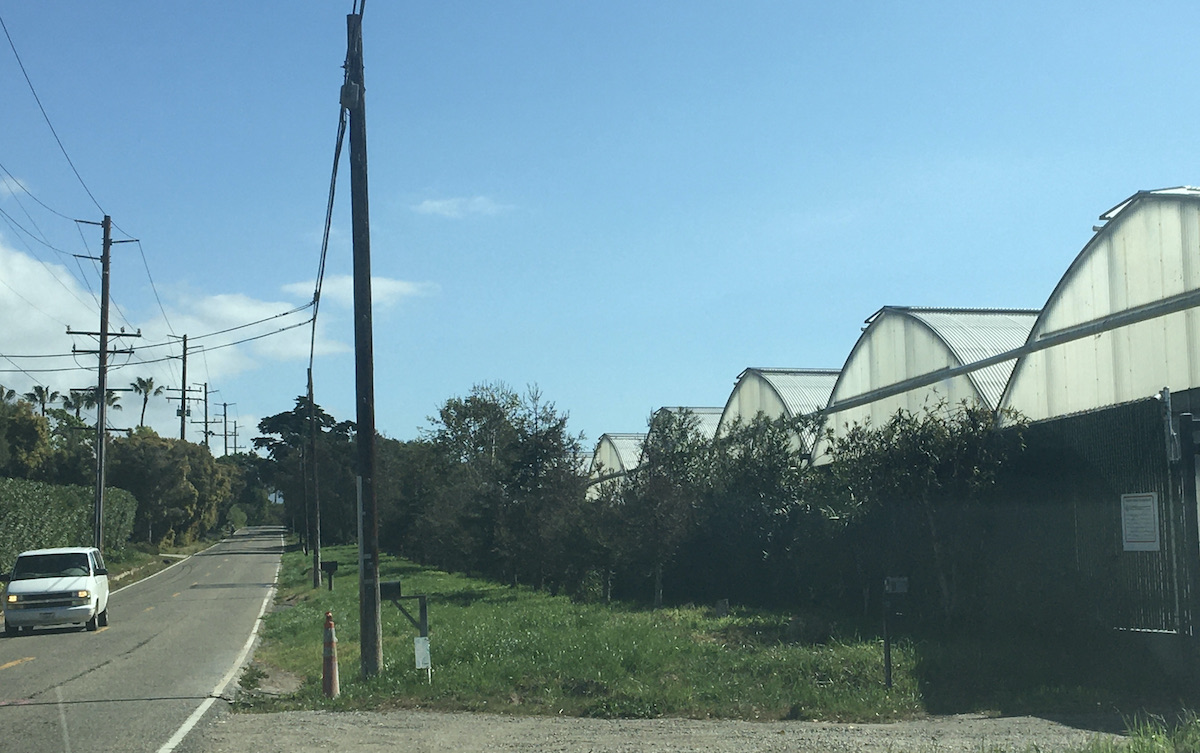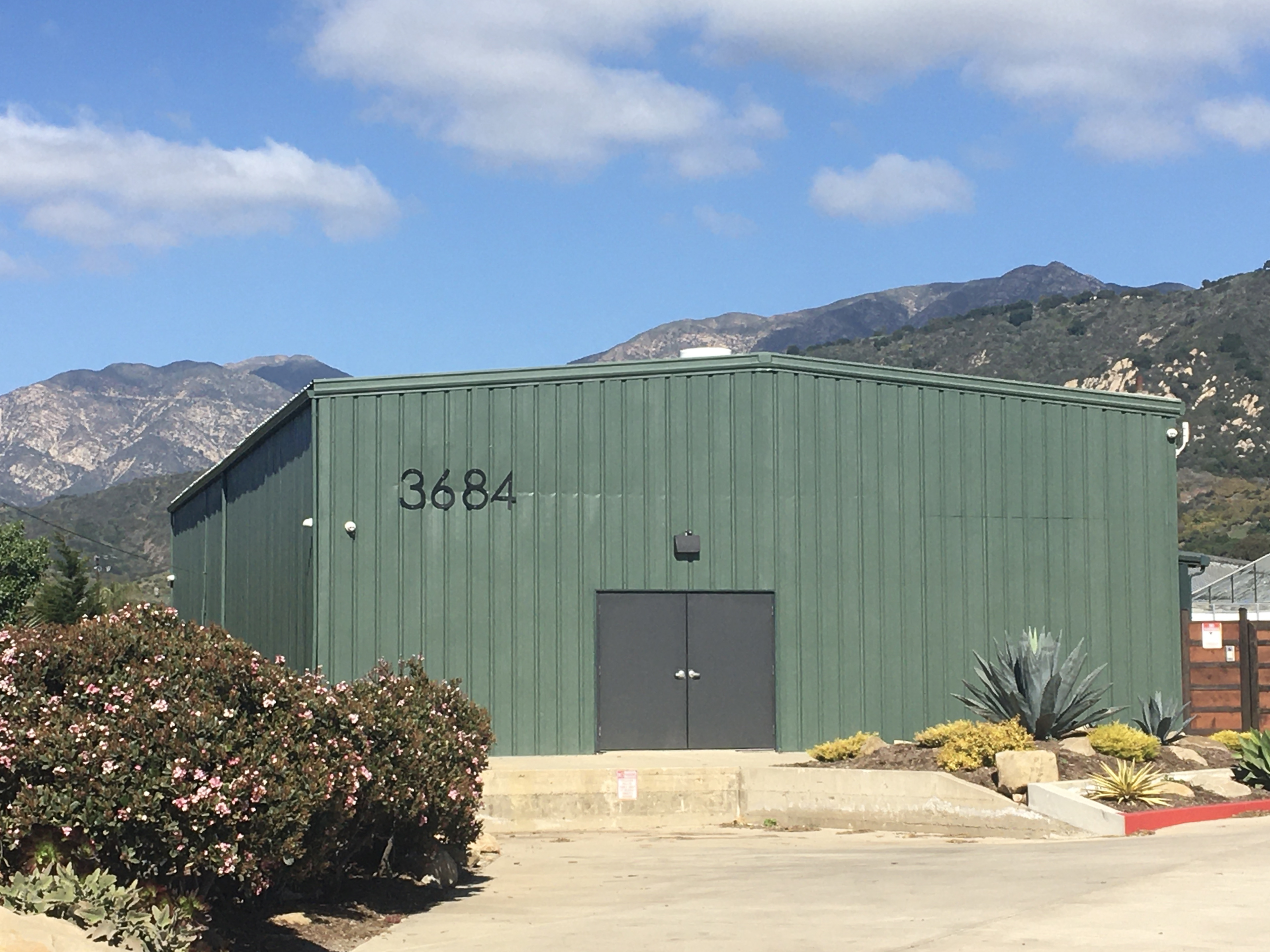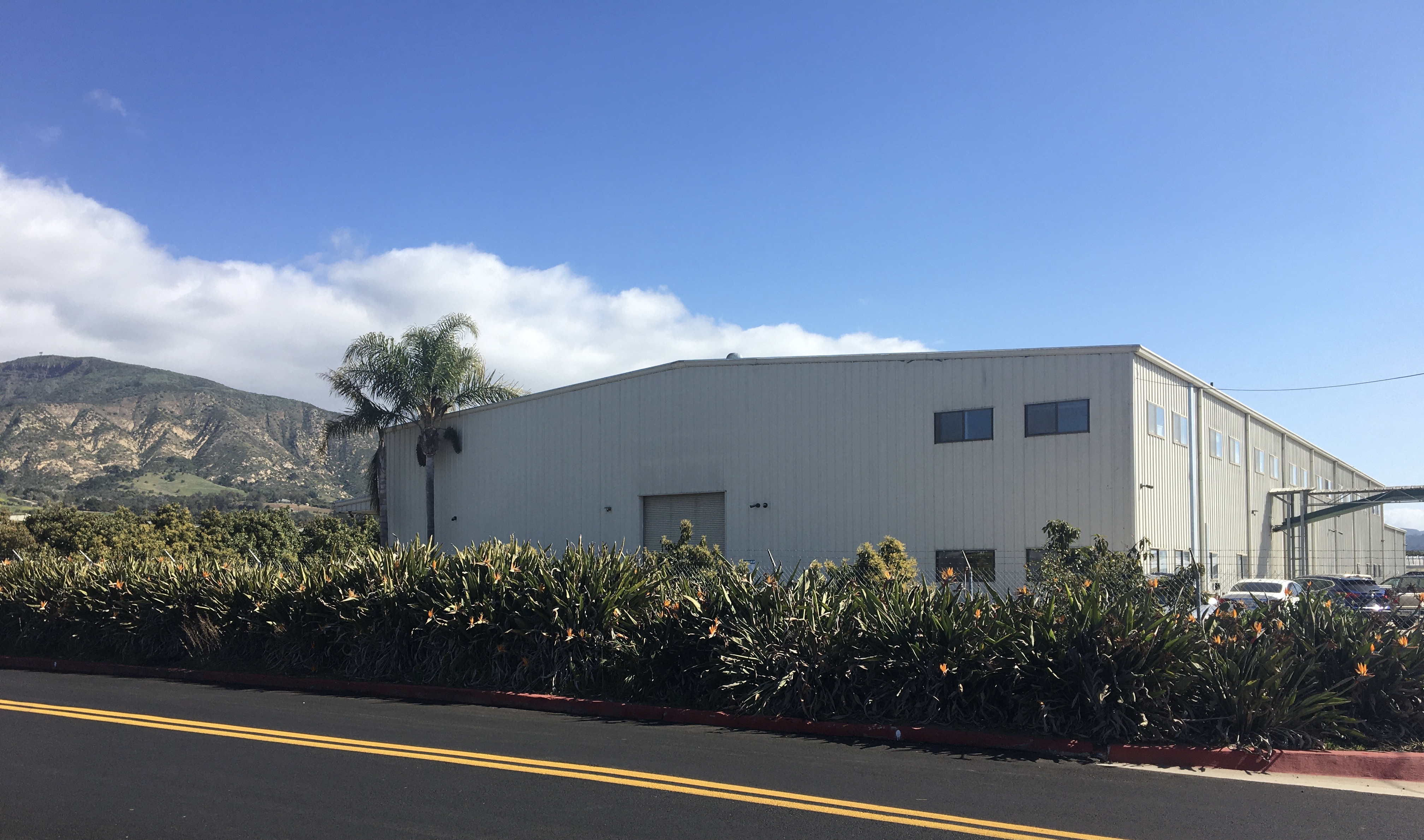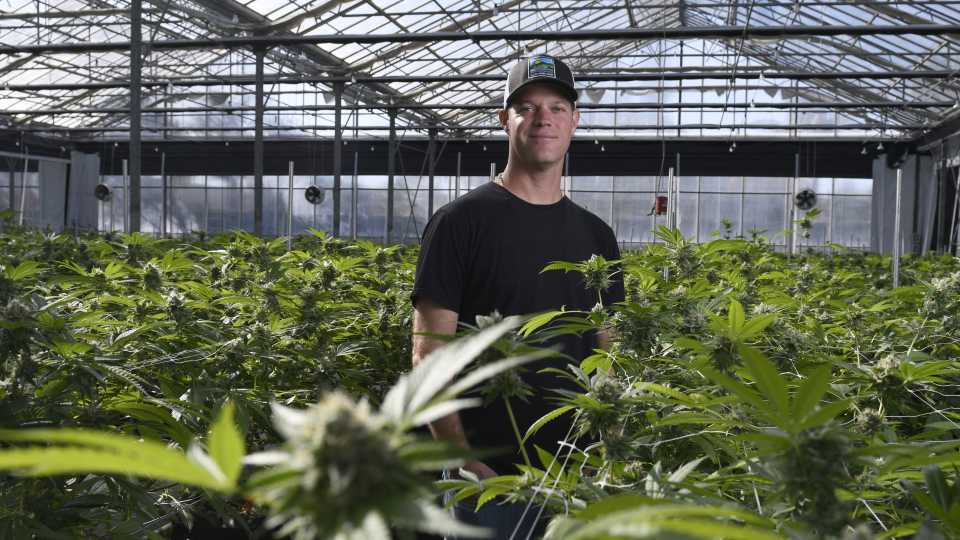Sidestepping Santa Barbara County’s Cannabis Caps
New Rules Would Promote Local Processing and Boost Tax Revenues, County Supervisors Say

Under pressure from growers, the Santa Barbara County Board of Supervisors is tinkering with the acreage caps in its cannabis licensing ordinance, a move it says will encourage the construction of marijuana processing buildings in unincorporated areas and staunch the loss of tax revenue to other California counties.
On February 15, the board voted 4-1 in concept, with Chair Joan Hartmann opposed, to remove buildings for the “drying, curing, and trimming” of cannabis from the acreage caps for “grows” in the Carpinteria Valley and North County. These caps have been set at 186 acres and 1,575 acres, respectively, since 2019.
Citing “very few existing or proposed processing facilities in the county,” the County Executive Officer told the board this month that the county faces “a substantial loss of tax revenue” because locally grown marijuana is being trucked elsewhere for processing. At today’s prices, growers say, unprocessed marijuana is fetching roughly $200 per pound, compared to $1,800 per pound of dry, trimmed, and packaged marijuana.
The amendments now on the table, county officials said, would result in more processing buildings here, including stand-alone buildings on properties where no cannabis is under cultivation. Typically, they would be about 25,000 square feet in size.
Additionally, county records show, removing acreage for processing from the caps would free up about 12 more acres for cultivation — three acres of outdoor “grows” in the North County and nine acres in Carpinteria Valley greenhouses.
“The sooner we do this, the better,” Supervisor Steve Lavagnino, who represents the Santa Maria Valley, said at a November 2, 2021, board hearing on the proposed amendments. “If we don’t fix processing, the rest of our cannabis program might as well be abandoned. We are losing an incredible amount of money. Growers are taking product to Salinas, Lancaster, Lake County, all over the state … We can’t continue this program forward, receiving pennies on the dollar.”
Supervisor Das Williams, who represents the Carpinteria Valley, said it was “dysfunctional” to be transporting cannabis out of the county for processing “when half the time it’s going to come back here. It seems hypocritical of us to add traffic trips on the road for no discernible reason … We should make this change with alacrity.”
A second reading and final board vote on the ordinance amendments has been set for March 1. Coincidentally, on the same date, the board will consider an appeal of cannabis processing building proposed by Graham Farrar, the owner of Glass House Farms, a hot spot for the “skunky” smell of pot.
‘Backdoor’ Expansion?
Critics of the cannabis industry regard the acreage caps as the “third rail” of county cannabis policy, not to be tampered with.
The City of Carpinteria and members of grassroots advocacy groups — WE Watch in the Santa Ynez Valley; Citizens Planning Association in Santa Barbara, Concerned Carpinterians and the Santa Barbara Coalition for Responsible Cannabis — have implored the board not to adopt the amendments, which many residents view as a “backdoor” expansion of the acreage caps and a breach of the public trust.
The caps are already too high, these critics say; just get a whiff of the “skunky” smell of pot that still clings to city neighborhoods near the “grows.”
“The City of Carpinteria wishes to go on record as being strongly opposed to the contemplated change,” Nick Bobroff, principal planner, wrote to the board this month. There is no shortage of processing in the valley, he said. State and county records show that more than 20 processing buildings have recently obtained zoning permits in the Carpinteria Valley or are operating with provisional state licenses.

Bobroff suggested that the board change the cannabis acreage caps for the North County, where only three out of 1,575 acres in the cap have been reserved for processing — and leave the 186-acre cap for the Carpinteria Valley alone.
But in the North County, residents wonder how many new processing buildings would be constructed under the proposed change.
“Is there going to be any limit on them?” asked Dave Clary, a resident of Tepusquet Canyon, a rural neighborhood southeast of Santa Maria. “It just kind of opens Pandora’s Box.”
State records show that growers in Santa Barbara County hold 29 active processing licenses, the third highest number after growers in Monterey and Humboldt counties, with 48 and 43 processing licenses, respectively.
Hartmann, who voted against the proposed ordinance amendments this month, represents the wine country west of Buellton, where conflicts over pesticide drift, the aesthetics of cannabis hoop houses, and the stink of pot in city neighborhoods and vintners’ tasting rooms have created bitter conflicts in recent years. Processing is the smelliest stage of cannabis operations, yet the county’s land-use ordinances don’t require odor controls on large properties zoned for agriculture, Hartmann said.
Under the proposed new rules, she said, “We could see cannabis coming up into new areas of the county where we haven’t already approved cultivation.… What can we prevent in terms of odor? For me, this is a no-go.”
Next fall, the board has said, it will consider requiring more restrictive zoning permits called conditional use permits for all North County cannabis operations, including processing buildings.
Glass House Project
To pave the way for more processing, the board is proposing to delete “drying, curing, and trimming” from the definition of “cultivation” in the cannabis licensing ordinance — a change that county officials said would not require environmental review.
At the board’s request, the County Executive Office surveyed the growers and held separate meetings with members of two industry organizations — the Carpinteria Association for Responsible Producers (CARP Growers) and Good Farmers – Great Neighbors, a North County group — “to understand the problem and identify barriers.”
During the past year, the office found, many growers dropped their plans for new processing buildings in the race to get their cultivation permits approved before the acreage caps were reached. The county requires the use of sealed buildings for cannabis processing, and the review of these projects is costly and time-consuming. Some growers are trucking their cannabis hundreds of miles away to be processed.
A market flooded with illegal pot hasn’t helped matters, the growers say.
“The legal industry is really struggling to survive,” Farrar, a past president of CARP Growers, wrote to the board in support of the ordinance amendments. Farrar owns 11 acres of cannabis under cultivation at Glass House Farms in the Carpinteria Valley.

“We know from experience that permitting and licensing ‘processing’ in Santa Barbara County is extraordinarily difficult and expensive,” Farrar said. “Keeping processing in the county is imperative for the health of the local cannabis ecosystem and imperative for the fiscal health of the county (tax collection).”
Glass House Farms operates as G & K Farms, eight greenhouses at 3561 Foothill Road; and Mission Health Associates, three greenhouses at 5601 Casitas Pass Road. Farrar is a co-owner of the Mission Health operation.
Like many other Carpinteria growers, Farrar is currently processing cannabis in an old packing house (his is on Casitas Pass Road), virtually a shed that was built decades ago for the cut-flower industry. But it’s not big enough, Farrar said; he has to truck up to 30 percent of his crop to a cannabis manufacturing facility that he owns in the City of Lompoc, an hour’s drive away.
Now, Farrar is proposing to build a state-of-the-art, 25,000-square-foot processing building at 3561 Foothill that can handle all of his cannabis. The project will be heard at the board on March 1, on appeal from the county Planning Commission’s approval last year.
Farrar said that members of CARP Growers support the cannabis ordinance amendments because their processing is “shoehorned” into old packing houses and they need more space. Farrar said he did not expect to increase his acreage under cultivation if his processing building is removed from the cap; the greenhouses on his properties are maxed out and he does not intend to build new ones.
“We don’t have empty space that would be used for cultivation,” he said.
Sign up for Indy Today to receive fresh news from Independent.com, in your inbox, every morning.
‘Guinea Pigs’
County records show that Farrar’s properties at 5601 Casitas Pass and 3561 Foothill are first and second for the most cannabis odor complaints filed by residents of the valley since 2015, with 285 and 252 complaints, respectively. Last year, 100 members of Concerned Carpinterians signed a petition against Farrar’s processing project.
In a 2021 agreement with the Santa Barbara Coalition for Responsible Cannabis, all CARP Growers members, including Farrar, pledged to install the “best available odor-control technology” at their greenhouses and processing buildings. Farrar is proposing an airtight “building-within-a-building” for processing, equipped with an outdoor vapor-neutralizing system and 19 indoor carbon filters to “scrub” out the smell of cannabis, plus a “negative pressure” ventilation system to more thoroughly treat the indoor air.
“We’ll get out of a pack house and into a custom-designed processing facility,” Farrar said. “It’s better for us, better for odor, and better for the county.”
As for his greenhouses, Farrar said he plans to install carbon scrubbers in them, too. The latest generation of scrubbers, imported from the Netherlands, is currently being tested at the Ever-Bloom greenhouses at 4701 Foothill.
“We keep our word and will do what we need to do to comply,” Farrar said.

Sarah Trigueiro, a resident of La Mirada Drive above Foothill, filed the appeal to the board. She wants the county to address the foul smell of cannabis at Farrar’s greenhouses before allowing any expansion there. The smell has caused her to suffer “regular nausea and headaches” as the odor is borne uphill into her neighborhood on the prevailing winds, Trigueiro said.
“This is a situation where waiting for an operator to prove over time that they can be a good neighbor and not cause significant air quality and odor impacts seems a prudent approach, before green lighting expanded and more resident-impacting operations,” she wrote in her appeal.
Valley residents, Trigueiro said, have been “guinea pigs in a shameful experiment for far too long.”
“We continue to experience the negative impacts of obnoxious cannabis odor infiltrating our property, often forcing us to keep our windows shut, even during heat waves,” Alexander and Patricia Globa of Carpinteria wrote to the board this month, expressing their opposition to increasing the cannabis caps. They asked the board to provide funding to monitor and enforce odor violations.
“The Board of Supervisors should recognize the CRISIS OF PUBLIC CONFIDENCE in their leadership on cannabis,” the Globas said.
‘Zombie’ Operations
Besides changes in the acreage caps, the board will consider two other amendments to its cannabis ordinance on March 1.
One would make it easier for growers to transfer ownership of a cannabis operation without losing their place under the acreage caps. Another would set a December 31, 2022, deadline for 15 “legal, nonconforming” growers in the North County to get a county business license, if they want to be included in the cap. They are presently growing 222 acres of cannabis.
Under the county’s permissive cannabis ordinance, these growers, who claimed to have been cultivating pot for medicinal purposes before marijuana was legalized in California, have been allowed to operate for more than four years without permits.
Some of the 15 have not responded to county requests for information on their projects, county officials said. At the February 15 board hearing, Good Farmers – Great Neighbors asked for an extension for the 15 until fall 2023. One grower, Ted Fox of PRO Farms and Heirloom Valley, a 44-acre “grow” at 6495 Santa Rosa Road, told the board he was having to upgrade old structures built by previous owners without permits, replace old septic tanks, and rebuild fences to the proper height. Fox said it had taken him more than three years to get a county zoning permit.
“It wasn’t us dragging our feet,” he said. “What it showed was that the wheels of the county review process grind very slowly.”
Members of the Coalition for Responsible Cannabis and other citizens’ groups have asked why they, too, weren’t surveyed or invited to meetings with the County Executive Office to discuss how the ordinance should be changed. They pressed the board to set an earlier deadline of June 30 this year for business licenses, saying that many of the legal, nonconforming growers had relied on “flimsy affidavits” claiming prior medicinal cultivation and had expanded their operations without permits.
Under the proposed amendments, the 15 growers would have until October 31 this year to obtain an “issued” zoning permit. Growers without a county business license by that date would have to shut down their operations; but if they obtained the license by December 31, their “grows” would be included in the North County acreage cap, and they could resume operations.
“That seems to be a zombie that just won’t die,” Clary said.
Melinda Burns is an investigative journalist with 40 years of experience covering immigration, water, science, and the environment. As a community service, she offers her reports to multiple local publications, at the same time, for free.
Support the Santa Barbara Independent through a long-term or a single contribution.




You must be logged in to post a comment.